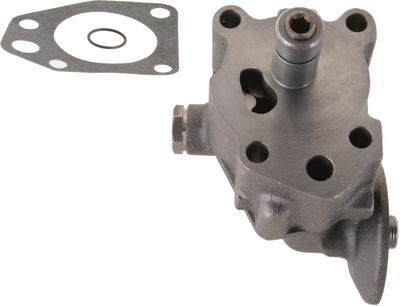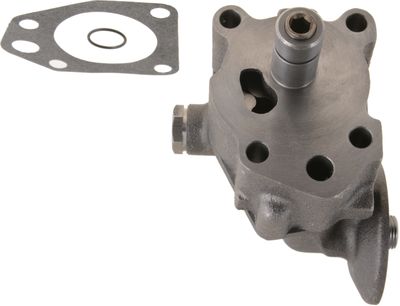Answer
Aug 20, 2024 - 08:01 AM
Identifying a failing Sealed Power 224-4174V engine oil pump early can help prevent serious engine damage. Here are some key signs and symptoms to watch for that could indicate your oil pump is failing:
1. Low Oil Pressure- Warning Light: One of the most common signs of a failing oil pump is the activation of the low oil pressure warning light on your dashboard. If this light comes on, it’s a strong indication that the oil pressure in your engine has dropped below a safe level.
- Oil Pressure Gauge: If your vehicle is equipped with an oil pressure gauge, you might notice that the pressure reading is lower than normal, especially at idle or under load.
- Ticking or Tapping Sounds: Insufficient oil pressure can cause the engine's hydraulic lifters to lose their prime, resulting in a ticking or tapping noise, particularly from the upper part of the engine.
- Knocking Sounds: A more severe knocking sound from the engine could indicate that the crankshaft and bearings are not receiving enough lubrication, which can occur if the oil pump is failing.
- Overheating: The oil pump plays a critical role in circulating oil throughout the engine, which helps with cooling. A failing oil pump can lead to inadequate oil flow, causing the engine to overheat.
- Inconsistent Oil Pressure: If you notice that the oil pressure fluctuates significantly or is inconsistent, it could be a sign that the oil pump is struggling to maintain steady pressure, possibly due to wear or a failing component.
- Loss of Power: Inadequate lubrication can lead to increased friction and heat in the engine, which may cause a noticeable decrease in engine performance or power.
- Stalling: In some cases, severe oil pump failure can cause the engine to stall or struggle to stay running.
- Contaminated Oil: During an oil change, if you notice metal shavings or debris in the oil or on the oil filter, it could indicate that the oil pump or other engine components are wearing excessively, possibly due to inadequate lubrication.
- The check engine light may also come on if the engine's sensors detect issues related to oil pressure or temperature that could be linked to a failing oil pump.
- While not as common, a failing oil pump can sometimes cause excessive oil consumption, especially if the lack of lubrication leads to increased wear in the engine's moving parts.
- Immediate Inspection: If you notice any of these symptoms, it’s important to inspect the oil pump and related components immediately. Continuing to drive with a failing oil pump can cause significant engine damage.
- Oil Pressure Test: Conduct an oil pressure test using a mechanical gauge to verify if the oil pressure is within the manufacturer’s specifications.
- Professional Diagnosis: If you’re unsure or unable to diagnose the issue, it’s advisable to take your vehicle to a qualified mechanic for a thorough inspection.
Catching the signs of a failing oil pump early can save you from costly engine repairs or replacements.





Add New Comment